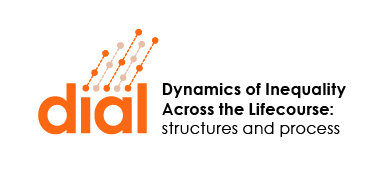
Structures and processes of labour market inequalities – Highlights from the first DIAL thematic workshop
Dynamics of Inequality Across the Life-course (DIAL) organised its first thematic workshop on Labour Market Inequalities Across the Life-course at the University of Turku on November 15-16, 2018. This two-day workshop brought together researchers from many of the research projects of the multi-disciplinary research programme as well as a representative from the OECD. Its focus was on inequalities related to the labour market, including working life transitions, gendered pay, retirement and working conditions. The presentations covered inequalities spanning different points of working-life pathways such as the early career, work-family relations, later earnings and retirement.
Starting from the early career stage, the HuCIAW project showed new evidence using administrative data on how, even after taking family background into account, which university you attended and what subject you studied matters for your earnings in the UK. Some research projects brought up emerging vital fields of studies regarding inequalities. For example the CILIA-LGBTQI+ project introduced a new approach, the agent-based model, to study the interactions between workplaces and LGBTQI+ citizens, and presented existing findings on the discrimination of LGBTQI+ workers in Portugal. The PREMLIFE project discussed intergenerational aspects of labour market fluctuations and how parental stress influences pre-term births, which in turn have long-lasting impacts on children’s development.
One important theme among the presentations was gender inequalities with respect to earnings, career projections and work-family relations. The HuCIAW project has found work experience after childbirth to be a significant factor affecting the gender pay gap in the UK. Further, their results show that mothers work closer to home than do fathers, which can limit their possibilities for obtaining higher-earning jobs. The EQUALLIVES project, on the other hand, showed that returning to work after childbirth is affected by mother’s pre-birth employment characteristics as well as educational attainment level. Further, they demonstrated that parental social class explains variation in initial wages among women whereas family-life trajectories influence the rate of women’s wage increases.
Another important theme during the workshop was inequalities of work among the older population. The DAISIE project presented results on working conditions of older citizens across European countries, highlighting that older workers reported being subjected to difficult working conditions less frequently in Nordic and Continental European countries than in Southern-Eastern countries. The DAISIE project also showed how the entitlement to a pension is the main factor in determining the timing of retirement in the Czech Republic. However, this can raise worries as women are entitled to retire earlier and thus their risk of poverty at old age is increased, something for which they already have a higher risk. The comparative studies of the DAISIE project demonstrated variation in retirement pathways across and within countries in Europe. For example, women and men in corporatist welfare regime countries are more likely to retire early than in other regimes. The OECD’s work on pension systems and their influence on inequality in retirement income was also discussed.
